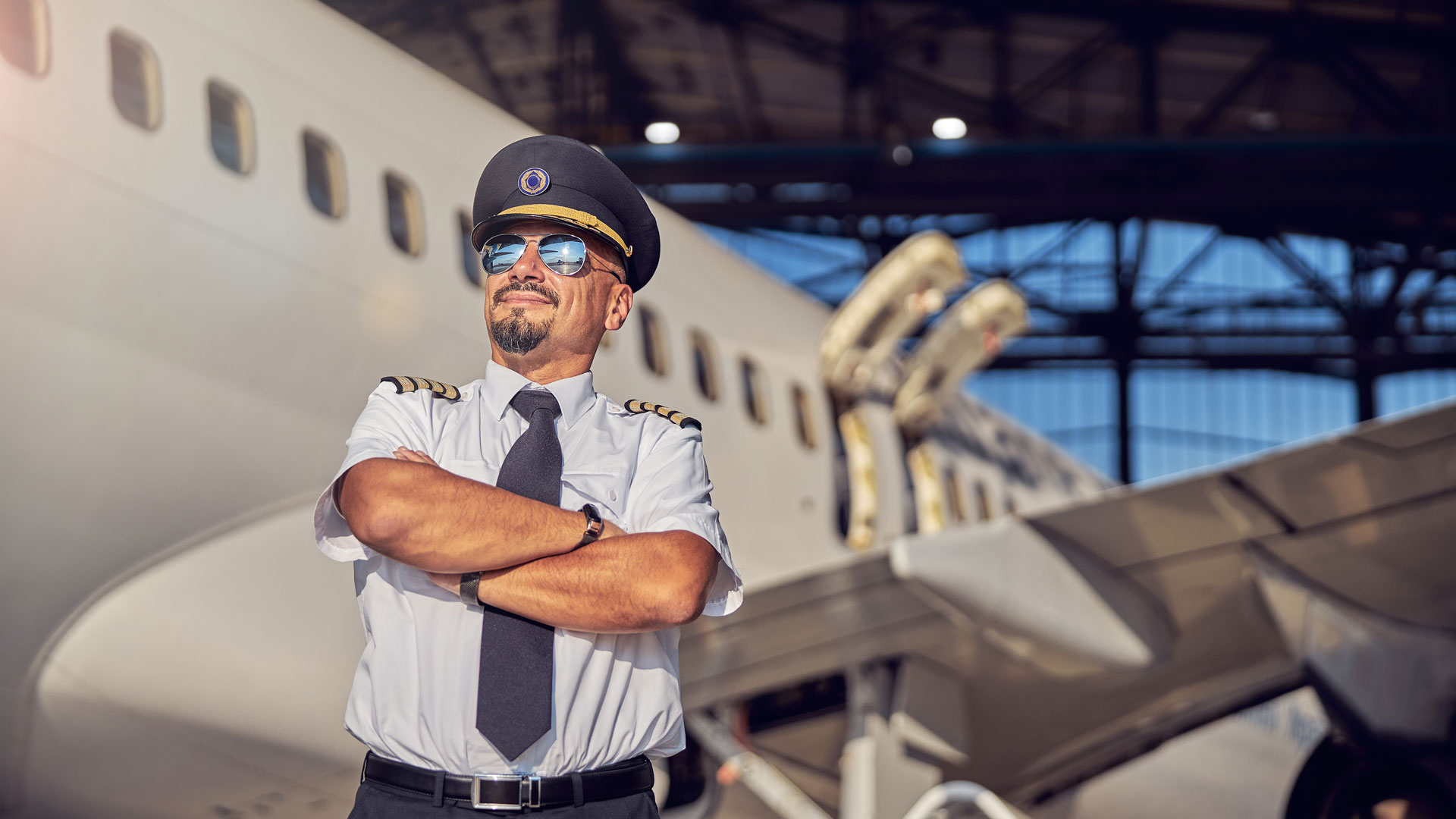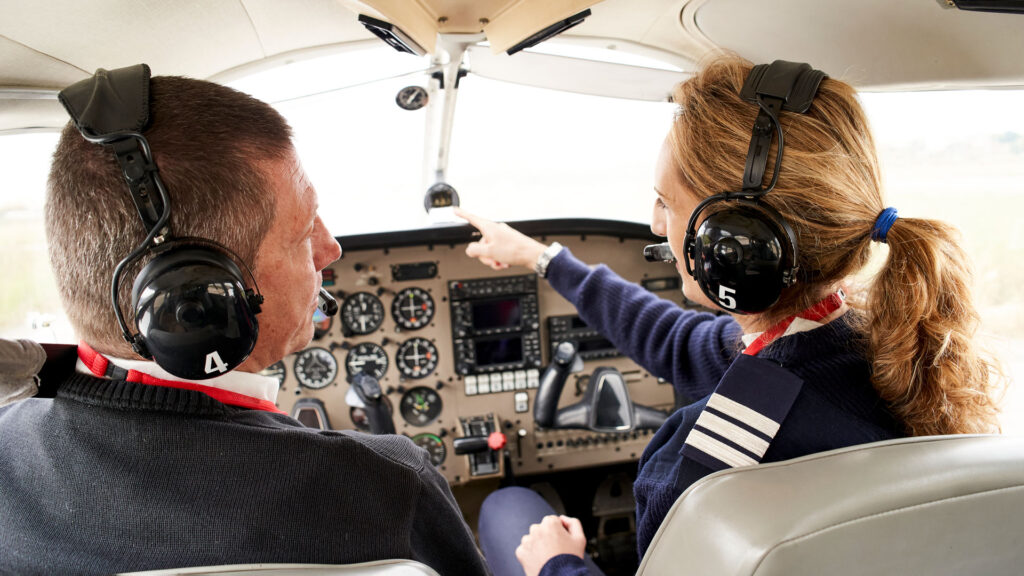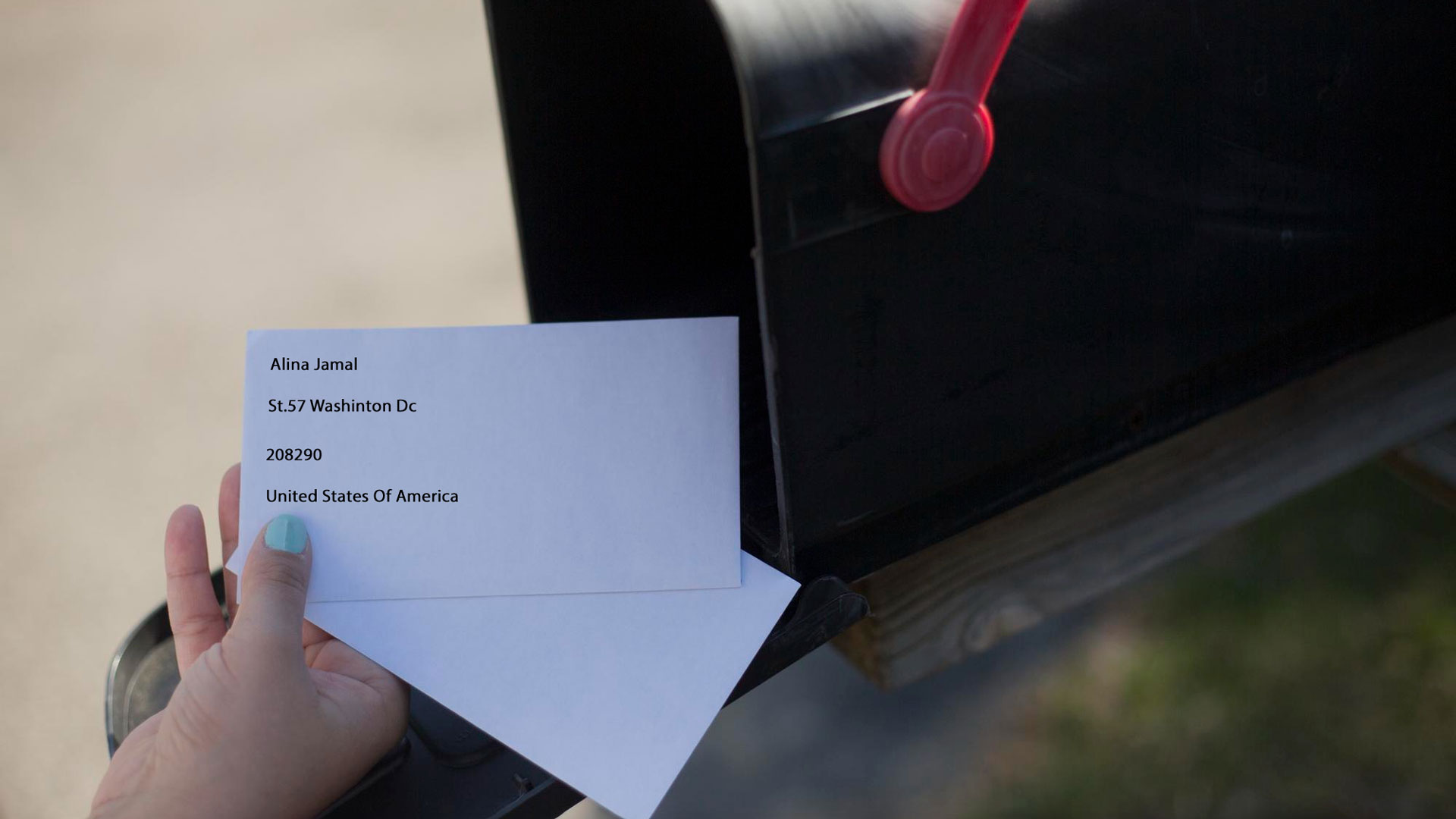How To Become A Pilot In 2024 | Eligibility, Flight Training & More

Have you ever dreamed of soaring through the clouds in your own plane? Becoming a pilot is a tough task, and there are many who still don’t quite know the process.
Read further and learn how to become a pilot! Discover the eligibility criteria, the requirements, and the flight training you’ll need to undergo!
Understanding the Basics Of Becoming A Pilot

Embarking on the journey to command an aircraft starts with a solid foundation.
Communication Skills
Being able to read, write, talk, and comprehend English is crucial for any aspiring aviator.
This language requirement ensures that pilots can understand important instructions and communicate effectively with air traffic control.
Age Requirements For Becoming A Pilot
To earn your private pilot license, you must meet specific age requirements. Generally, you need to be at least 17 years old to apply for this license, which allows you to fly solo and carry passengers.
However, you can start your flight training earlier, as there is no minimum age for beginning lessons. Many aspiring pilots begin their training at 15 or 16.
Furthermore, if you wish to obtain a commercial pilot license, the minimum age increases to 18. This reflects the greater responsibilities that come with flying for hire. Understanding these age requirements is crucial for your aviation journey.
What are the Different Types Of Pilot Training Programs?
There are various types of pilot training programs. Each is designed to cater to different aviation goals.
A basic program typically covers the requirements to become a private pilot. It includes ground school and flight training.
For those aspiring to fly commercially, advanced programs focus on the pilot program necessary for obtaining a commercial pilot’s license.
Aspiring airline pilots can pursue programs that prepare them for an airline transport pilot certificate. These programs allow them to learn how to become a first officer or airline captain in commercial airlines.
Take a Discovery Flight
A discovery flight is a chance for you to try flying with an instructor and see if it’s something you love.
What It Entails
During a discovery flight, you’ll have the opportunity to sit in the pilot’s seat alongside a certified flight instructor. You’ll get to steer the plane yourself under their guidance. It’s a safe and exciting way to experience flying firsthand.
Before you take off, your instructor will explain the basics of operating an aircraft. You’ll learn about the instrument panel, the importance of checking the weather, and how planes stay up in the air.
This pre-flight briefing is super important and is part of every pilot’s routine.
A New Perspective
Once you’re up in the sky, you can expect breathtaking views. You’ll see the landscape from a whole new perspective. If you’re curious, your instructor can also share insights about the science of flight and what it takes to navigate through the skies.
Duration
Discovery flights typically last between 30 minutes to an hour, so you’ll have ample time to soak in the experience. If you find that flying captivates you, this adventure could be the first step towards a future in aviation.
Get Your Medical Certificate
An Aeromedical Examiner (AME) checks if pilots need to be healthy for flying.
When you meet with an AME, they’ll check a bunch of different things about your health.
They’ll look at your eyes to make sure you can see well, both near and far.
They’ll check your ears and hearing. Being able to hear is very important when you’re flying.
They’ll also make sure your heart is strong and healthy, and that you don’t have any serious medical conditions that could make flying unsafe for you or your passengers.
A First-Class Medical Certificate
If you want to fly big planes for a living, you’ll need to get what’s called a first-class medical certificate. It’s a must-have for professional pilots who fly as their main job.
Getting this certificate isn’t a one-time thing, though. You have to go back and see the AME regularly to make sure you stay in great health.
For example, if you’re under 40, you’ll renew your first-class medical certificate every 12 months. If you’re 40 or older, you’ll do this every six months because staying healthy is key to being a good pilot.
Apply for a Student Pilot Certificate
Before you start flying by yourself, think of getting a student pilot certificate as earning your wings to learn.
To obtain this certificate, you’ll use a special website called the Integrated Airman Certification and Rating Application (IACRA). This site is the official online system for pilots to apply for their necessary certificates.
Now, you might be wondering exactly what you need to do on IACRA.
First, you’ll create an account, which is pretty straightforward.
Once you’re logged in, you’ll fill out an application with details about yourself. The form will ask for things like your name, address, and date of birth.
Don’t worry if this sounds a bit daunting. Your flight instructor will guide you through each step.
After you submit your application, there’s a short wait. The Federal Aviation Administration (FAA) will review your application.
Once the FAA gives the green light, you’ll receive your student pilot certificate in the mail. This piece of paper is important because it’s what allows you to fly a plane solo during your training.
The journey to becoming a pilot is exciting, and getting your student pilot certificate is one of the first big steps.
Study Hard for the Knowledge Test
If you want to become a pilot, you need to study hard for the FAA private pilot knowledge test.
First things first: you’ll need to hit the books. There’s a bunch of topics to cover, from weather patterns to how to communicate with air traffic control. When you’re ready, your flight instructor will give you a special endorsement.
Take the Practical Exam
The final step to becoming a pilot and earning a private pilot certificate is the practical exam. This crucial test comes in two segments: an oral portion and a flight portion. Let’s delve into what each part entails.
Oral Exam: Showcasing Your Knowledge
First up is the oral exam. During this phase, you’ll sit down with an examiner who will ask you a series of questions.
These questions are designed to test your understanding of important concepts. You’ll need to explain flight operations, weather patterns, aircraft systems, and emergency procedures.
It’s essential to answer confidently and accurately. This demonstrates your theoretical grasp of flying.
Flight Test: Proving Your Skills
During a flight test, you get to actually fly a plane and show that you can handle it safely and competently. You’ll perform various maneuvers, and the designated pilot examiner will observe how you manage the aircraft.
This includes tasks like takeoffs and landings, navigating, and responding to hypothetical emergency scenarios. A successful flight test proves you have the practical ability to be at the helm of an aircraft.
Passing both sections of the practical exam is a big achievement. This means you can get your commercial pilot license and become a commercial airline pilot.
Keep Flying and Learning
Embarking on a career as a pilot can be thrilling. Even after earning your license, the learning never stops. Here are some things you can experience:
Flying Different Kinds Of Aircraft
As a pilot, you have the exciting opportunity to steer different types of aircraft. From small single-engine planes to large commercial jets, each one offers a unique flying experience.
This variety not only keeps your job interesting but also broadens your skills and understanding of aviation.
Traveling To New Places
You may be piloting for regional airlines, or going on international flights. Traveling to new destinations can be both a joy and a challenge. Each place has its own weather patterns, air traffic rules, and scenic views.
By exploring unfamiliar airports and countries, you enhance your adaptability and problem-solving abilities, which are key traits for any skilled pilot.
Become A Flight Instructor
Furthermore, if you love sharing knowledge and guiding others, you might consider becoming a certified flight instructor and overseeing pilot training courses.
This role allows you to teach aspiring aviators the art of flying. It’s a way to give back to the community and shape the future of aviation by passing on your expertise and passion for flying.
How Much Does It Cost To Become An Airline Pilot?
The cost to become a private pilot typically ranges from $8,000 to $15,000, depending on flight school and location.
After obtaining a private pilot license, aspiring aviators must invest significantly more to secure a commercial license, often exceeding $30,000.
Ultimately, reaching the level required for a major airline can total upwards of $100,000.
How Long Does It Take To Become A Commercial Pilot
Embarking on a pilot career requires dedication and a significant investment of time.
The journey typically begins with flight training. This can take anywhere from six months to two years, depending on the chosen path and personal commitment.
Aspiring pilots need to accumulate a specific number of flight hours to meet pilot requirements. These generally include a minimum of 250 hours of flight time for a commercial pilot certificate.
Additionally, many pilots choose to pursue an airline transport pilot license, which necessitates even more flight hours and training.
How long it takes to become a commercial pilot varies, but with focused effort and a structured training plan, individuals can achieve their goal in a relatively short period.
Can You Become An Airline Pilot Without A Degree?
You do not need a degree to become an airline pilot in the USA. While it can be beneficial, it is not strictly necessary.
The time it takes to complete flight training and accumulate the required hours can vary, but dedicated individuals can achieve their goal without a formal education.
Obtaining the necessary licenses and ratings through flight schools can pave the way to a successful career.
Ready for Takeoff?
Becoming a pilot is an exciting journey full of learning and adventure. It takes hard work, dedication, and a love for flying. However, once you do earn your license, you can soar above the clouds and visit new places.



